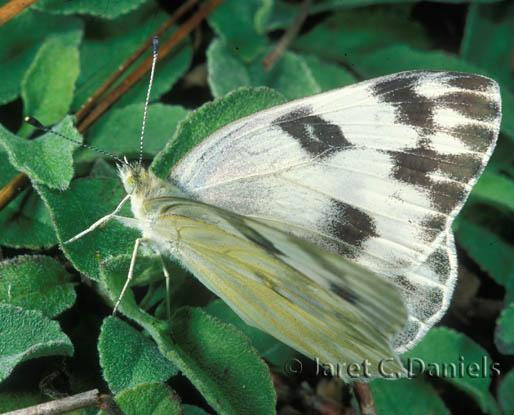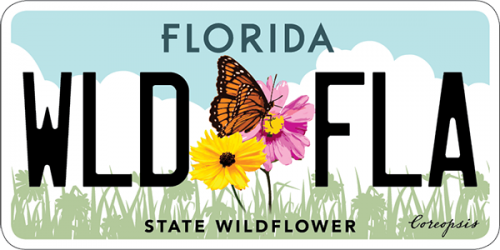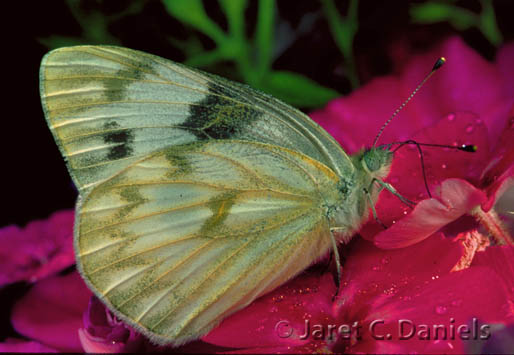- Family name: Pieridae/Whites and Sulphurs
- General description: Male forewing white with prominent square black cell spot and additional small black to gray spots along outer margin; hindwing unmarked white. Female forewing white with charcoal apex and more noticeable charcoal spots; hindwing white with gray chainlike band along margin. Ventral hindwing white with faint gray markings in males or more extensive yellow-gray scaling along veins in females. Seasonally variable; spring individuals smaller with more extensive dark gray scaling along veins on ventral hindwing.
- Field Marks: white with black spots; forewing with square black cell spot
- Sexes: different

- Wingspan: 32-45 mm
- Life Cycle: Egg: whitish-yellow, spindle-shaped, laid singly on host leaves, flowers or developing seeds Mature larva: gray with yellow longitudinal stripes and covered in small black spots Chrysalis: gray, speckled with black
- Number of Generations: multiple
- Flight Season: February-December
- Abundance: Common
- Habitat: disturbed sites, weedy fields, roadsides, agricultural land
- Larval Host Plants: Virginia pepper grass (Lepidium virginicum)
- Similar Species: Great Southern White
- Additional Information: Uncommon in gardens. Range is limited in Vermont and New Hampshire.
- Range in Florida
 The Florida Wildflowers & Butterflies projects at the Florida Museum are sponsored in part by the State of Florida and the Florida Wildflower Foundation, Inc.
The Florida Wildflowers & Butterflies projects at the Florida Museum are sponsored in part by the State of Florida and the Florida Wildflower Foundation, Inc.
